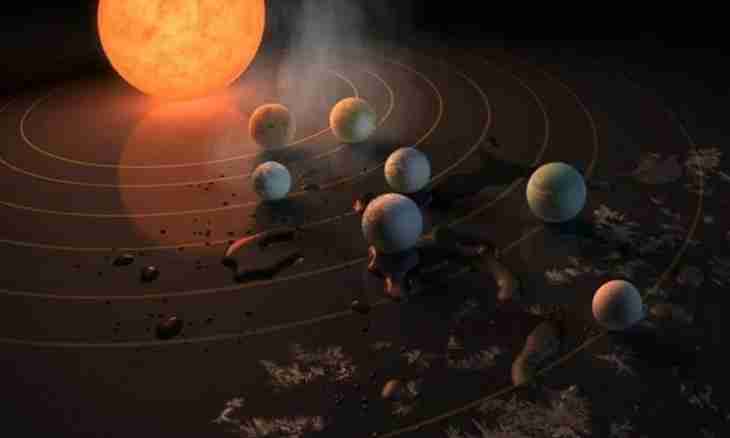The star and planets rotating around it, the perishing stars and not clear fogs – all this disturbs minds of scientists of the whole world not one century. And than learns mankind about the Solar system more, more questions are born.
It is difficult to present that else relatively recently the mankind had no idea of the structure of the solar system and it was subordinated to blind and very archaic beliefs and canons that our planet having an appearance of absolutely flat surface is the center the Universe and a reference point of all other celestial bodies surrounding it from which especially bright and large planets were distinguished. They were named according to the settled traditions, in honor of the Greek and Roman gods.
Sun as center
Cardinally changed idea of the person of the structure of the solar system and bases and the principles of a world order, the heliocentric system which entered life thanks to researches of the Polish scientist Nicolaus Copernicus who without use of the telescopic equipment and other devices available to today's researchers of space, could construct and make unmistakably the realistic graphic representation of a powerful system completely other than ideas that seven main planets among which the Sun and the Moon consist rotate around so-called terra firma became the real break.
In Copernicus's exercises the Sun for the first time acquired the status of the main heavenly body, and the Moon passed from the category of large independent planets into a rank of constant heavenly satellites of Earth.
Galileo's researches
With the advent of powerful optics the researchers managed to confirm the guesses and to make sure completely that the sky is decorated by not just shining small lamps, and powerful celestial bodies having the special building, satellites staying eventually in various phases of the individual, not depending on a state Earth, life. The name of famous Galileo Galilei, the first official researcher of a lunar surface is connected with this period of grandiose astronomical opening. Thanks to serious mathematical calculations in the 18th century Uranium was discovered, and in the 19th Galileo the Neptune presents to scientific community the eighth planet of our solar system. In the 20th century Clyde Tombaugh shows proofs of existence of the ninth planet relating today to the category of minor planets of the Solar system, Pluto. Development of science and technology made study star the sky available and expanded borders of idea of mankind of the classical Solar system, today people are overwhelmed with thirst of opening of absolutely new heavenly elements. So in 2003 the astronomers recorded mysterious bodies which can be carried to the minor not studied planets such as Erida, Sedna, Makemaka.

